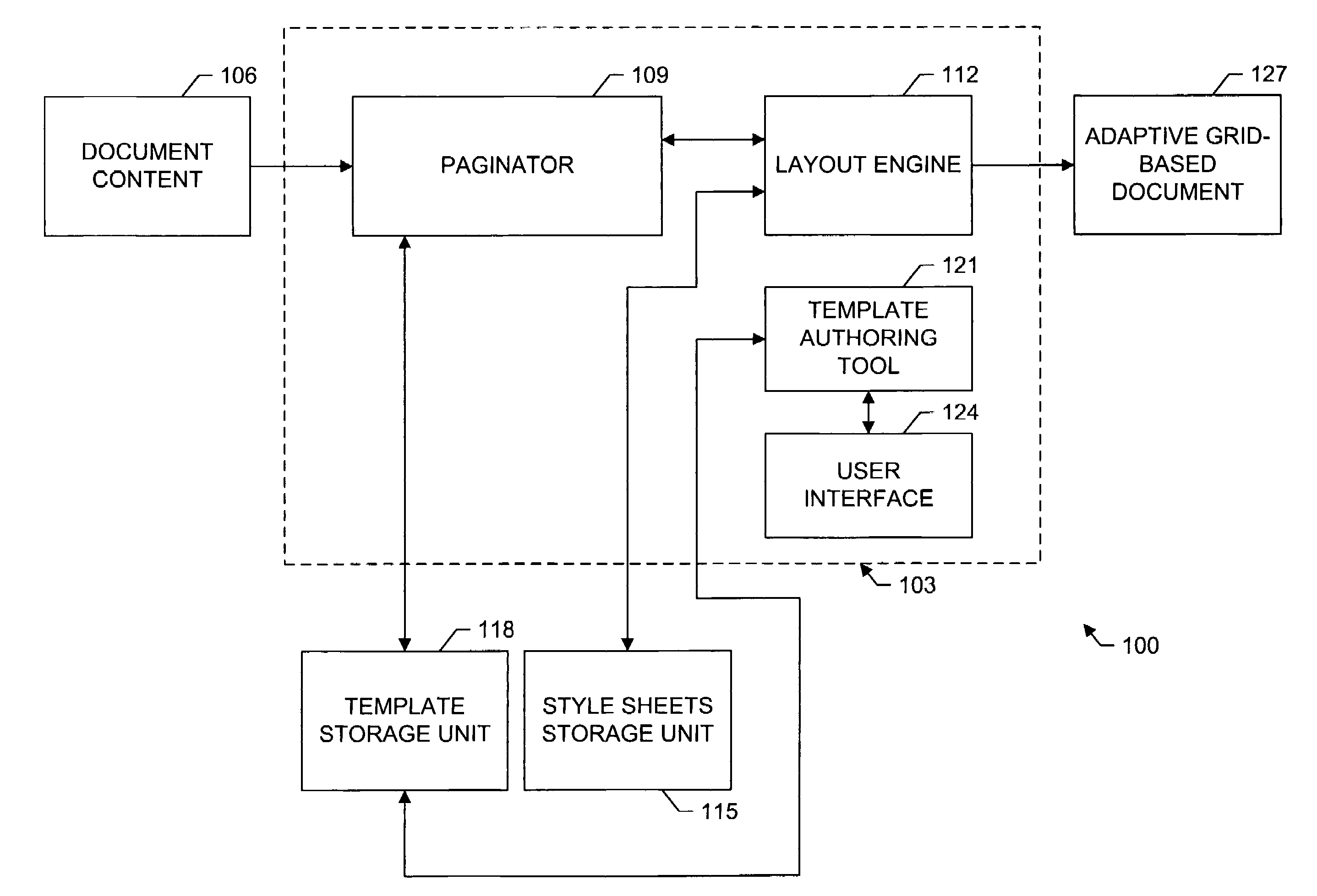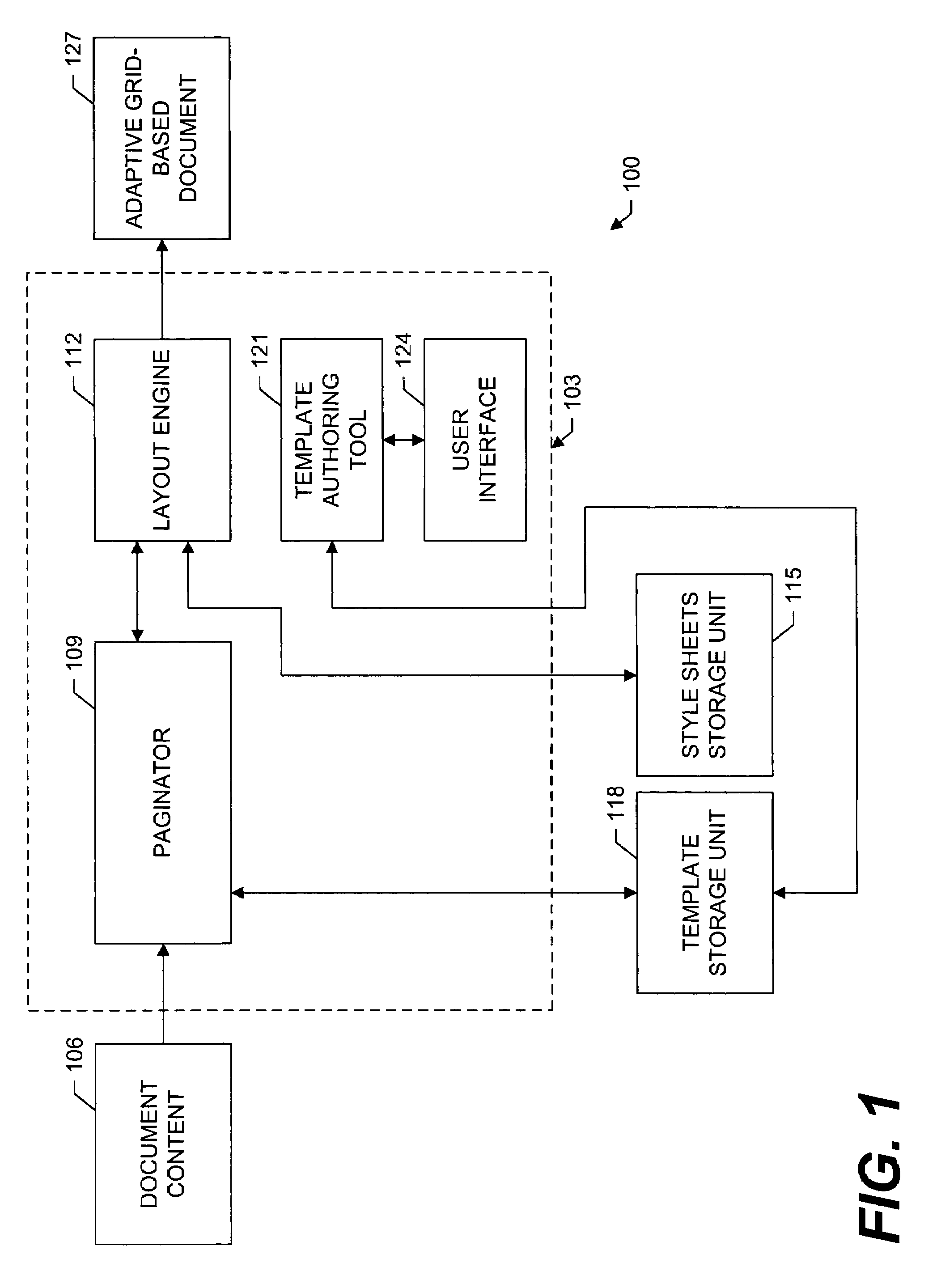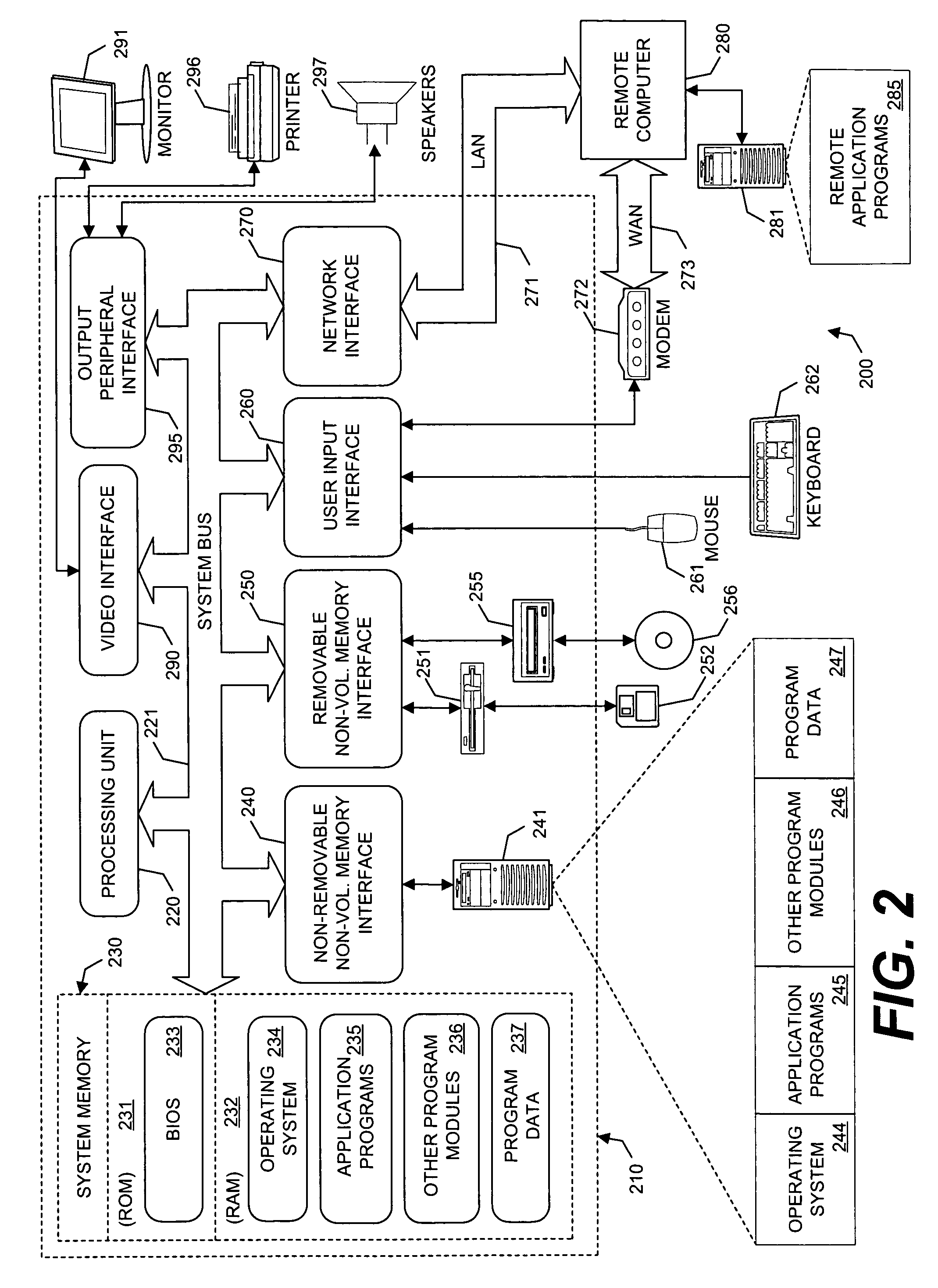System and methods for facilitating adaptive grid-based document layout
a document layout and adaptive technology, applied in the field of document layout systems and methods, can solve the problems of generalizing grid-based designs, losing the original grid-based document layout, and not having an obvious way for customized layouts to adapt to a range of pages, so as to achieve optimal pagination, reduce the effect of overlapping and overlapping
- Summary
- Abstract
- Description
- Claims
- Application Information
AI Technical Summary
Benefits of technology
Problems solved by technology
Method used
Image
Examples
Embodiment Construction
[0026]Referring now to the drawings, in which like numerals represent like components or steps throughout the several views, FIG. 1 displays a block diagram representation of an adaptive grid-based document layout environment 100 in accordance with an exemplary embodiment of the present invention. The adaptive grid-based document layout environment 100 comprises an adaptive grid-based document system 103, style sheet storage unit 115, and template storage unit 118. The adaptive grid-based document layout environment 100 is supported by hardware and software components similar to those found in well-known computing systems, environments, and / or configurations described more fully below with reference to FIG. 2. The adaptive grid-based document system 103 comprises a paginator 109, layout engine 112, template authoring tool 121, and user interface 124.
[0027]The style sheet storage unit 115 communicatively connects to the adaptive grid-based document system 103 via the layout engine 11...
PUM
 Login to View More
Login to View More Abstract
Description
Claims
Application Information
 Login to View More
Login to View More - R&D
- Intellectual Property
- Life Sciences
- Materials
- Tech Scout
- Unparalleled Data Quality
- Higher Quality Content
- 60% Fewer Hallucinations
Browse by: Latest US Patents, China's latest patents, Technical Efficacy Thesaurus, Application Domain, Technology Topic, Popular Technical Reports.
© 2025 PatSnap. All rights reserved.Legal|Privacy policy|Modern Slavery Act Transparency Statement|Sitemap|About US| Contact US: help@patsnap.com



